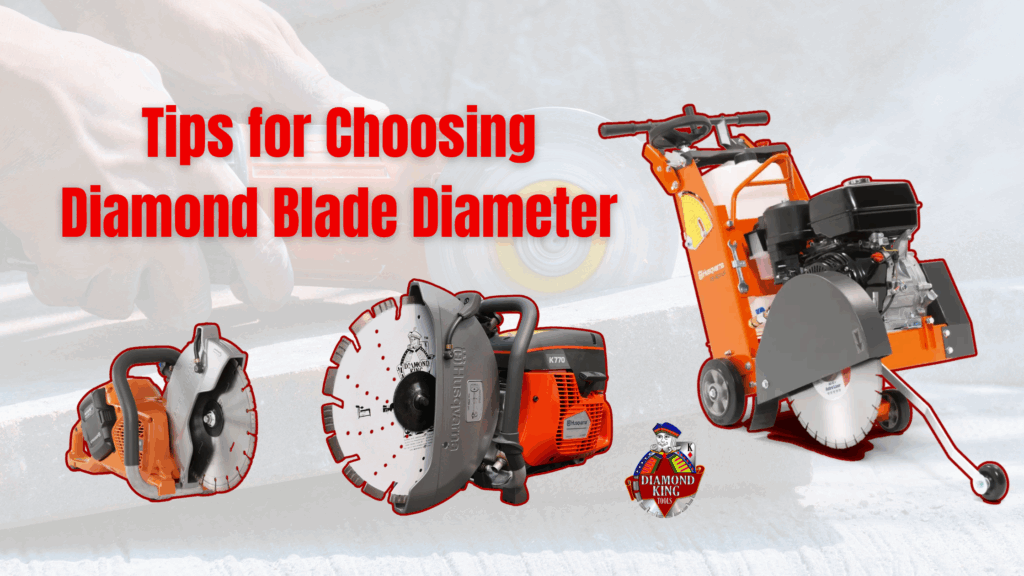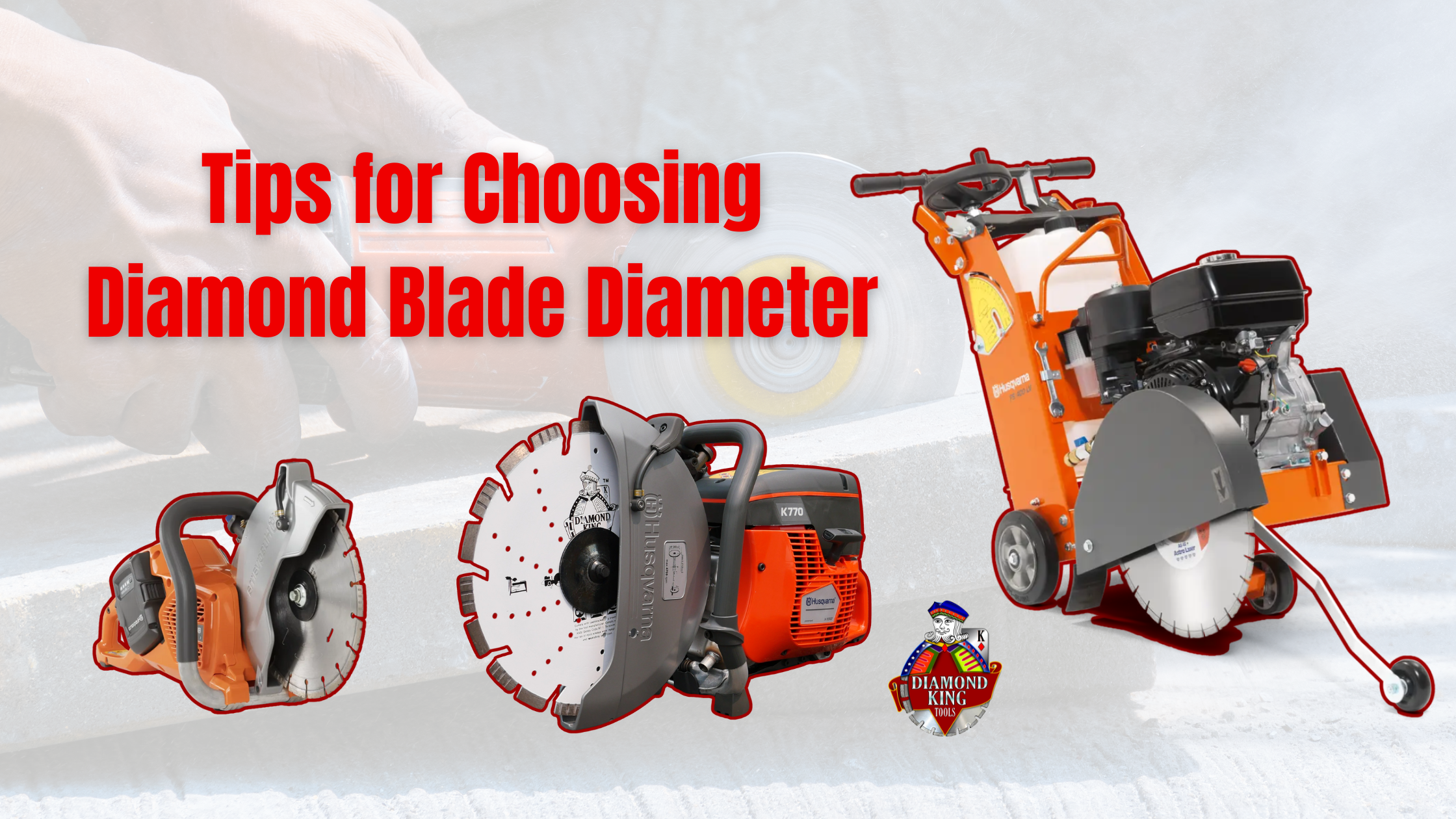When it comes to cutting concrete, asphalt, stone, or masonry, one of the most important decisions you’ll make is selecting the correct diamond blade size. While many contractors focus on blade quality, the size of the blade plays a critical role in safety, efficiency, and the overall success of the project. Choosing the wrong size can lead to wasted time, increased costs, and even safety risks.
In this article, we’ll explain why diamond blade size matters, how to determine the right size for your job, and tips for making the most of your cutting tools.
Why Diamond Blade Size Matters
The size of your diamond blade impacts:
- Cutting Depth – Larger blades can cut deeper, making them essential for thick concrete slabs, asphalt roads, or stone blocks. Smaller blades are better suited for shallower cuts or precision work.
- Saw Compatibility – Not every saw can handle every blade size. Using a blade that’s too large for your saw can damage your equipment and put operators at risk.
- Speed and Efficiency – Larger blades often cut slower due to their size but handle bigger jobs in fewer passes. Smaller blades cut faster but may require multiple cuts for deeper materials.
- Blade Life – Running the wrong blade size for your job can cause excessive wear and shorten the lifespan of your investment.
Common Diamond Blade Sizes
Diamond blades range in size from 4-inch handheld blades to 36-inch walk-behind saw blades. Here’s a quick overview:
- 4″-9″ Blades – Ideal for angle grinders and small handheld saws. Great for tiles, bricks, pavers, or detail work.
- 10″-16″ Blades – Commonly used on table saws and cutoff saws. Perfect for medium-depth cuts in concrete, asphalt, or block.
- 18″-24″ Blades – Often used on walk-behind saws for deeper cuts in roads, driveways, or large slabs.
- 30″-36″+ Blades – Heavy-duty roadwork and infrastructure projects. Designed for high-horsepower saws and the most demanding cuts.
How to Pick the Right Diamond Blade Size
When selecting a diamond blade size, consider these key factors:
- Material Thickness – Measure the depth of the material you need to cut and check the cutting depth of your blade. Diamond blades are usually rated to cut a depth of about 1/4 to 1/3 of their diameter.
- Saw Power and Capacity – Always check your saw’s maximum blade capacity and horsepower rating. A saw designed for a 14″ blade should not be fitted with a 16″ blade.
- Job Type – For roadwork or heavy construction, larger blades save time on deep cuts. For precision cutting in landscaping or tile work, smaller blades are more efficient.
- Operator Control – Smaller blades are lighter and easier to control, making them better for fine detail. Larger blades require experienced operators for safe handling.
- Budget and Efficiency – While larger blades cost more, they may save money in labor by reducing the number of cuts required.
Pro Tips for Blade Sizing Success
- Always Use the Manufacturer’s Guidelines – Never exceed the saw’s rated blade size.
- Plan for Step Cutting – On deep materials, step cutting with a slightly smaller blade may extend blade life.
- Match Blade Type to Size – Don’t just choose the size, make sure you’re using the right blade (asphalt, concrete, combo, or specialty) for the material.
- Keep Safety First – Larger blades spin with greater force. Always use proper PPE and inspect your blades before cutting.
Final Thoughts
Choosing the right diamond blade size isn’t just about fit, it’s about performance, safety, and efficiency. By understanding your material, your saw, and your job requirements, you’ll be able to select the blade size that delivers the best results.
At Diamond King Tools, we carry everything from small precision blades to heavy-duty road saw blades up to and over 36″. Whether you’re a contractor, landscaper, or hardscaper, we have the perfect blade size for your job.
Call us at (877) 700-2022 or visit diamondkingtools.com to find your next blade today.




